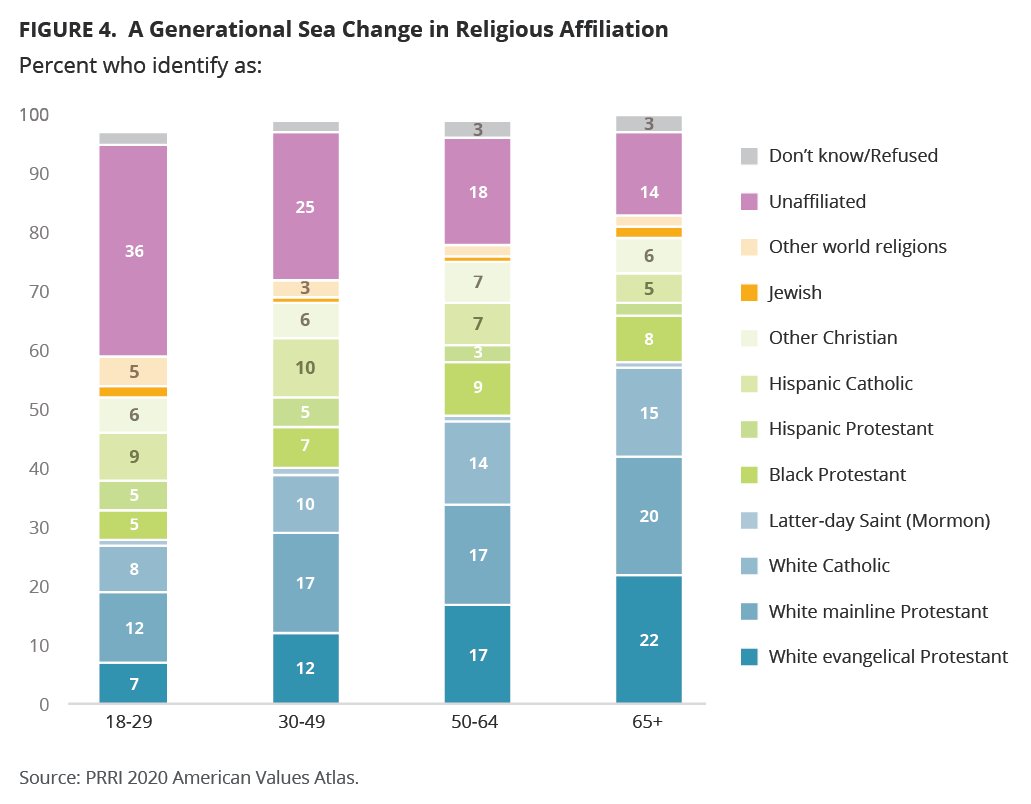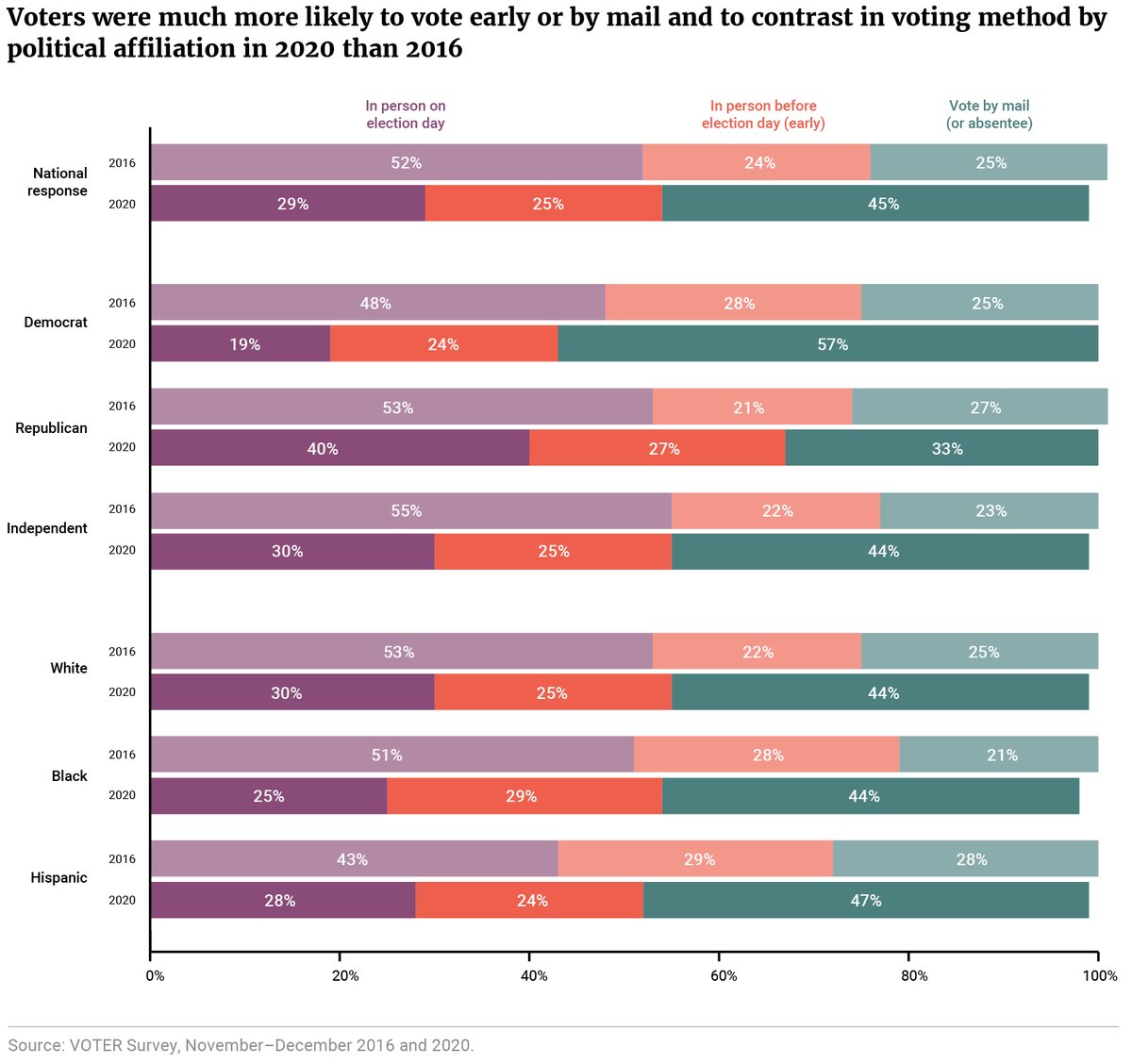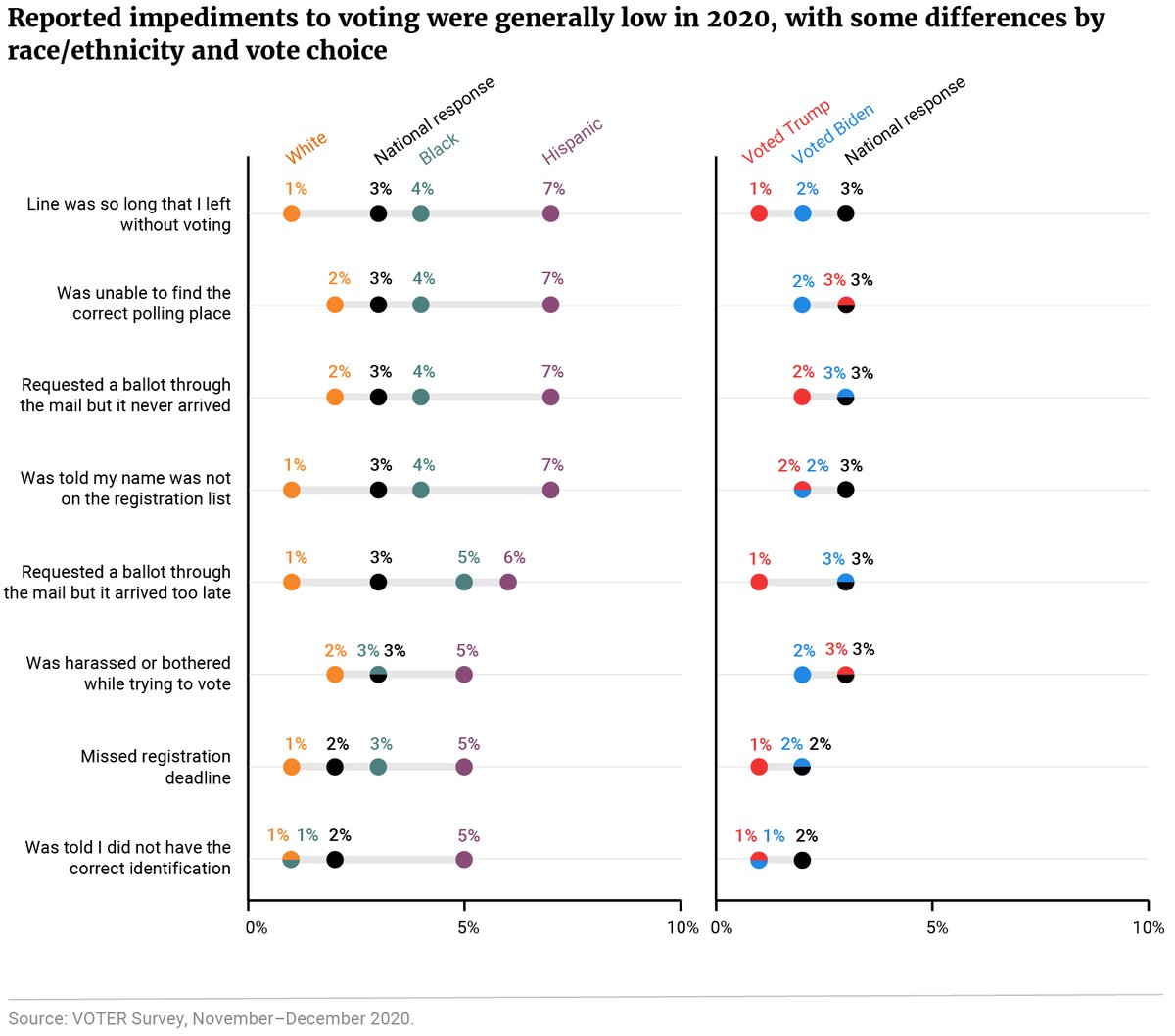
Big finding floating around today is that White Mainline Protestants (WMP) are rising. I'm a little skeptical.
- Unlikely that these changes would be caused by generational change. The other option is conversion.
- Not seeing those kinds of conversions in panel data.
[thread]
- Unlikely that these changes would be caused by generational change. The other option is conversion.
- Not seeing those kinds of conversions in panel data.
[thread]

To start, this is not a take-down thread or anything like that. I'm trying to put puzzle pieces together and things aren't quite lining up. That's worth talking about even if I'm not quite sure what it means. Lots of respect for the PRRI team and the work they've done.
Big findings are a) WMP is up ~3pts and b) unaffiliated are down ~2pts over the last two years.
First question I ask: Might this be the result of changes in identity (i.e. conversion) or due to underlying demographic changes?
First question I ask: Might this be the result of changes in identity (i.e. conversion) or due to underlying demographic changes?
Demographic change doesn't strike me as a good explanation.
- Changes are too big/quick.
- They're moving in the wrong direction. If you swap out Silent+ generations for Gen Z, you'd expect WMP to decline and unaffiliated to rise. These changes are swimming against the current.
- Changes are too big/quick.
- They're moving in the wrong direction. If you swap out Silent+ generations for Gen Z, you'd expect WMP to decline and unaffiliated to rise. These changes are swimming against the current.

So that leaves us with conversion - people changing their religious identification over time.
But we're not seeing those changes in the VOTER Survey, which tracks the same people over time. If anything, we've got lots of people leaving WMP between '18 and '20.
But we're not seeing those changes in the VOTER Survey, which tracks the same people over time. If anything, we've got lots of people leaving WMP between '18 and '20.

What does all this mean? Honestly, I'm not sure.
Survey research is hard but what we can hope for is evidentiary triangulation - i.e. multiple sources of data with different strengths that tell roughly similar stories.
It's not obvious what we should do when they don't.
Survey research is hard but what we can hope for is evidentiary triangulation - i.e. multiple sources of data with different strengths that tell roughly similar stories.
It's not obvious what we should do when they don't.
I could certainly tell a story about how PRRI's data is right and my interpretation + VOTER is wrong. I could also do the opposite.
This is why I said up top I'm "a little skeptical". Worth being holistic about this stuff and I'm not sure quite what to make of the finding.
This is why I said up top I'm "a little skeptical". Worth being holistic about this stuff and I'm not sure quite what to make of the finding.
@nataliemj10 if you've got any thoughts, let me know. Always fun to be totally wrong about something (usually means I get to learn something new).
@dhopkins1776 not sure if you track religious identification, but I'd be curious what you're seeing in your panel as well.
• • •
Missing some Tweet in this thread? You can try to
force a refresh







